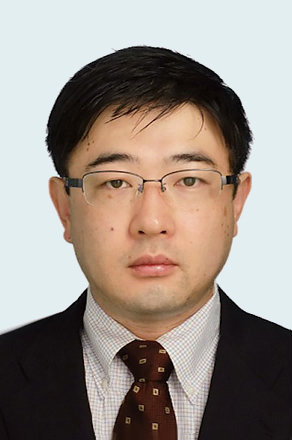
The Advent of Materials Informatics - Novel Materials Design Based on Computational and Data Sciences
Laboratory on Data-Driven Quantum Materials Search
Associate Professor:HONGO Kenta
E-mail:
[Research areas]
Materials Informatics, Data Science, Computer Simulations.
[Keywords]
Bayesian Statistics, Machine Learning, First-principles simulations, Materials Simulations
Skills and background we are looking for in prospective students
For those who hate computers, our research would be not a lot of fun, but torture, i.e., you are expected to be not allergic to computers. If possible, it is desirable to have acquired knowledge of math (especially, calculus and linear algebra), physics, and chemistry at undergrad level.
What you can expect to learn in this laboratory
Materials Informatics (MI) is collaboration between two different types of sciences, materials science and informatics, so you will learn materials, computational, data, and statistical sciences, would open up your intelligence as well as knowledge. MI is a new interdisciplinary research field, so you have a big chance not only to witness the rapid development of the new science, but also to be a pioneer therein. In addition, MI researches will develop your skills in programming and touch-typing, leading to more spare time and hence a more fruitful life.
【Job category of graduates】 Sumitomo Electric, Oak Ridge National Laboratory
Research outline
Recently, I have been awarded ample research grants for "Materials Simulations" and "Materials Informatics", and conducted their related research projects collaborating with many domestic and international researchers.
Materials Simulations
JAIST has three supercomputers available for all the members. Using these facilities, students are systematically educated in high performance computing. My current research topics are first-principles simulations applied to various types of materials including both organic and inorganic compounds [see Key Publication # 2 & 3], where their structures, electronic/thermal properties are predicted theoretically. These projects have been supported by the Grant-in-Aid for Scientific Research on Innovative Areas "Mixed Anion" and “High Entropy Alloys” projects and KAKENHI from MEXT.
Materials Informatics
An ultimate dream in materials science is to computationally discover novel materials with desirable properties. Recent materials simulations can predict properties accurately, but cannot discover such desirable materials all by themselves. The structure search can be regarded as inverse problems of the property predictions, for which Bayesian statistics is helpful. I am developing a new approach to material structure search based on Bayesian statistics with a chemical language model for generating chemical compounds [see Key Publication #1].
Combining the Bayesian approach with millions of learning data from first-principles simulations, the project intends to discover better functional compounds. These projects have been supported by PRESTO and the Materials Research by Information Integration Initiative (MI2I) project of the Support Program for Starting Up Innovation Hub from JST (Japan Science and Technology Agency), collaborating with worldwide researchers. Very recently, we have been working on exploration of biomedical materials.
Key publications
- H. Ikebata, K. Hongo, T. Isomura, R. Maezono, R. Yoshida, 'Bayesian molecular design with a chemical language model', Journal of Computer-Aided Molecular Design 31, 379-391, (2017).
- D. Kato, K. Hongo, R. Maezono, M. Higashi, H. Kunioku, M. Yabuuchi, H. Suzuki, H. Okajima, C. Zhong, K. Nakano, R. Abe, H. Kageyama, Valence Band Engineering of Layered Bismuth Oxyhalides toward Stable Visible-Light Water Splitting: Madelung Site Potential Analysis', Journal of the American Chemical Society 139, 18725-18731 (2017).
- K. Hongo, R. Maezono, 'A Computational Scheme to Evaluate Hamaker Constants of Molecules with Practical Size and Anisotropy', Journal of Chemical Theory and Computation 13, 5217-5230 (2017).
Equipment
JAIST high performance computing systems (Dell PowerEdge),
Lab’s computing server (Fujitsu FX700, PRIMAGY[NVIDIA A100 GPU])
Teaching policy
Your primary objective at JAIST should be to take master/doctor's degree by writing a dissertation and passing the defense within standard duration (two/three-year term), while my mission is to guide and supervise you to accomplish your objective. Your main subject will be carefully chosen from cutting-edge research projects in progress collaborating with researchers with background in materials science and data/statistical science. The former, based on physics and chemistry, is deductive, while the latter inductive. You should get accustomed to both of them. Note that not only an innovative idea, but also "Standing on the shoulders of giants" ("discovering truth by building on previous discoveries") is essential to develop MI.
[Website] URL : https://www.jaist.ac.jp/~hongo/